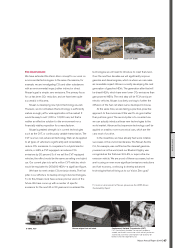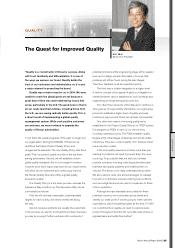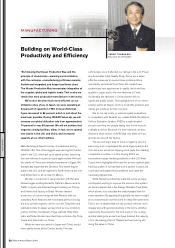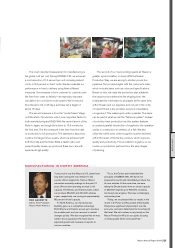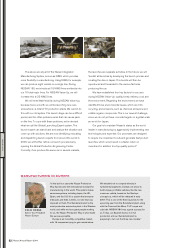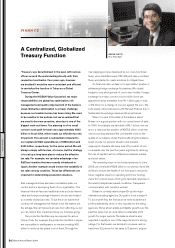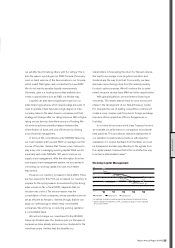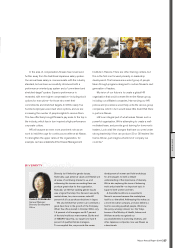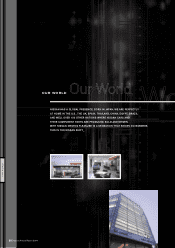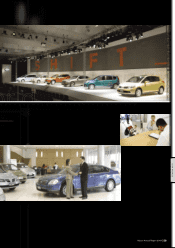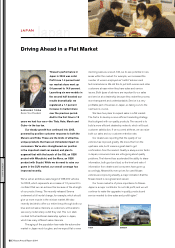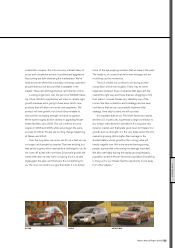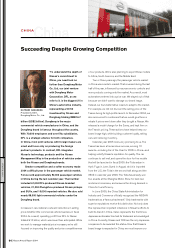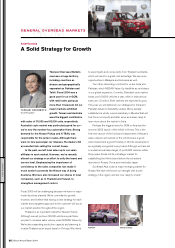Nissan 2005 Annual Report Download - page 58
Download and view the complete annual report
Please find page 58 of the 2005 Nissan annual report below. You can navigate through the pages in the report by either clicking on the pages listed below, or by using the keyword search tool below to find specific information within the annual report.
Nissan Annual Report 2004
56
we had many foreign executives working at Nissan
headquarters, and the majority of communications were in
English as well as Japanese. As a result, more employees,
including non-management staff, are being assigned to
work outside of Japan. In addition, proficiency in English is
now a prerequisite for all managers at Nissan. These efforts
to promote diversity are transforming our corporate culture.
One of the most interesting developments of NISSAN
180 was the advent of the Career Coach system, which we
imported from our Alliance partner, Renault. In a modern
business structure, HR is in charge of structural and
system functions such as compensation. The Career Coach
system provides career development for the individual
employee. There are five career coaches at this time, one
for each of the major functions. Their collective task is to
identify people of high potential and create career plans for
them. In a sense, they work outside of HR, although they
report to me. The coaches gather once a month for the
Nissan Assignment Committee, headed by Mr. Ghosn, to
report on their activities.
Employees at Nissan also have the chance to control
their career paths through our internal “self-career” system
on the Company’s intranet. Managers can search for
employees registered on the system for open positions
they have and proactively post job vacancies on the open-
entry system portal. Although the open-entry system has a
longer history, the self-career system began in early fiscal
2005 in Japan. We plan to expand both these programs on
a global basis.
“Once perceived as bureaucratic and slow to change,
Human Resources changed dramatically during the
NISSAN 180 period. Now, in fact, people occasionally
say that we’re changing too rapidly. That may be true,
but a positive dynamism is emerging as a result, and
Nissan is stronger because of it.
The impetus for many of the modifications comes
from top management. Mr. Ghosn, for one, takes a
direct and abiding interest in this area of operations.
There is also a cross-functional team dedicated to
organizational issues that recommends changes to
HR policy. And because half the people on our HR
staff come from other companies, many suggestions
are coming from within as well. The latter is very
unusual for a major Japanese company such as
Nissan, and is a direct result of a new policy we call
Mid-Career Scouting, which actively seeks talent
from outside Nissan. All of these activities are
indicative of the dynamism that is creating such
diversity at the Company.
There is no doubt that diversity is a key theme in our HR
evolution. We are currently focusing on three areas in
particular: women in the workforce, Mid-Career Scouting,
and embracing other cultures. We are working to provide
more opportunities for our female employees (please see
the Diversity feature on p. 57). Renault, which has a number
of female executives—including many with families—has
served as a great example for us. Unfortunately, that kind
of work-home balance is still rare for women both inside
and outside the executive ranks in Japan.
The second area mentioned, Mid-Career Scouting, is
still an uncommon practice at Japanese companies. We
have found great value, though, in the insights people who
have experience in other corporate cultures bring to
Nissan, and we are able to learn to take advantage of
those insights.
The third area, embracing other cultures, became a
more pressing consideration after the Alliance. Suddenly
Dynamism and Diversity
HITOSHI KAWAGUCHI
Senior Vice President
OUR WORK
HUMAN RESOURCES
Nissan Management Institute



